In this edition:
* TEVEL Satellites Begin Atmospheric Reentry and Decommissioning
* Ariane 6 Launches PariSat: Young Engineers Test Heat Dissipation
* SpaceX to Develop Enhanced Dragon Spacecraft for ISS Deorbit
* GridMasterMap Satellite Top 100 Rovers August 2024 Rankings
* Changes to AMSAT-NA TLE Distribution for July 26, 2024
* ARISS News
* Upcoming Satellite Operations
* AMSAT Ambassador Activities
* Satellite Shorts From All Over
The AMSAT News Service bulletins are a free, weekly news and information service of AMSAT, the Radio Amateur Satellite Corporation. ANS publishes news related to Amateur Radio in Space including reports on the activities of a worldwide group of Amateur Radio operators who share an active interest in designing, building, launching and communicating through analog and digital Amateur Radio satellites.
The news feed on https://www.amsat.org publishes news of Amateur Radio in Space as soon as our volunteers can post it.
Please send any amateur satellite news or reports to: ans-editor [at] amsat.org
You can sign up for free e-mail delivery of the AMSAT News Service Bulletins via the ANS List; to join this list see: https://mailman.amsat.org/postorius/lists/ans.amsat.org/
ANS-210 AMSAT News Service Weekly Bulletins
To: All RADIO AMATEURS
From: Radio Amateur Satellite Corporation
712 H Street NE, Suite 1653
Washington, DC 20002
DATE 2024 Jul 28
TEVEL Satellites Begin Atmospheric Reentry and Decommissioning
The TEVEL satellite project, featuring a series of CubeSats designed and built by Israeli students, has entered its final phase with the beginning of atmospheric reentry and decommissioning. This initiative, a collaboration between the Israel Space Agency (ISA) and Tel Aviv University, has been a key educational tool, providing practical experience in satellite technology to students across Israel.
Launched in January 2022 on the SpaceX Falcon 9 Transporter-3 mission, the TEVEL satellites were part of a broader effort to promote STEM education. The CubeSats, built to the 10x10x10 cm standard, were used for various missions including scientific data collection, amateur radio communication, and technology experimentation. The project aimed to enhance students’ understanding of satellite technology and prepare them for careers in the space industry.
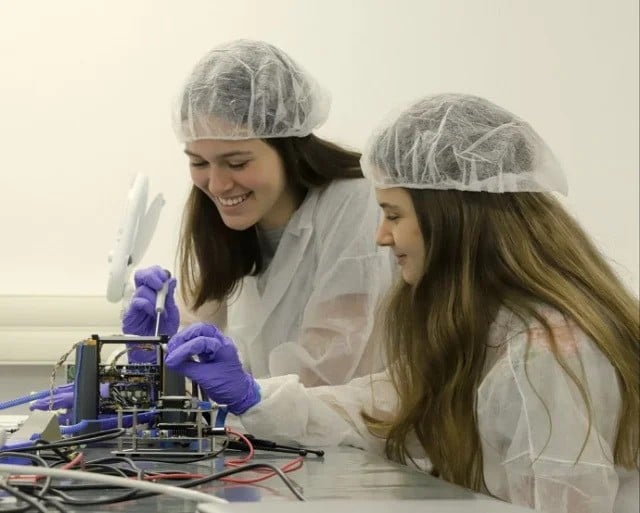
As the satellites now re-enter Earth’s atmosphere, this phase marks the end of their operational lives. The reentry process, which involves the satellites burning up upon reentry to prevent space debris, is being monitored by both educational teams and the broader space community. This final stage offers a valuable learning opportunity for students tracking the satellites’ descent and analyzing the data.
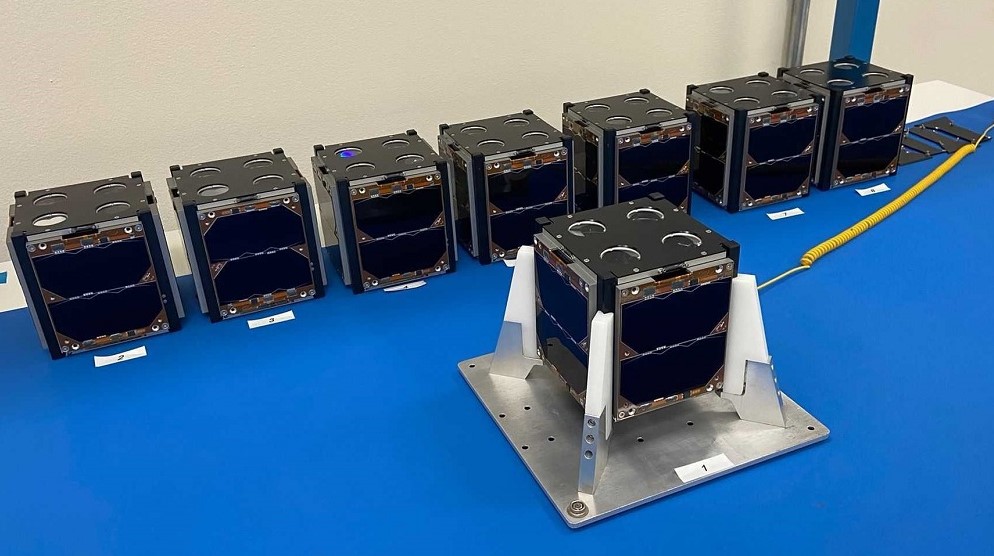
The success of the TEVEL project sets a precedent for future educational satellite initiatives, demonstrating how hands-on learning can be integrated with practical space missions. As the satellites complete their final descent, they leave behind a legacy of inspiration and international collaboration in both educational and amateur radio fields.
[ANS thanks Lorenzo Gianlorenzi, IU1BOT, Vashradio.org, for the above information]
Ariane 6 Launches PariSat: Young Engineers Test Heat Dissipation
On July 9, 2024, Europe’s newest rocket, the Ariane 6, launched with a range of missions on board, each with unique objectives and dedicated teams. Among these missions was PariSat, a project that highlights the ingenuity and dedication of the Garef Aérospatial club. This amateur space club, comprised of young engineers aged 15 to 25, has been working diligently on satellite testing, with the goal of exploring how different materials handle heat dissipation in space.
The core of the PariSat experiment is to determine which materials are most effective at dissipating heat in the harsh environment of space. The project, however, is not just about the scientific results but also about the educational journey for the young engineers involved. Based in a modest building near the Georges Carpentier stadium in Paris’s 13th district, the club members work after school, applying their passion for space to design and build their satellite experiment.
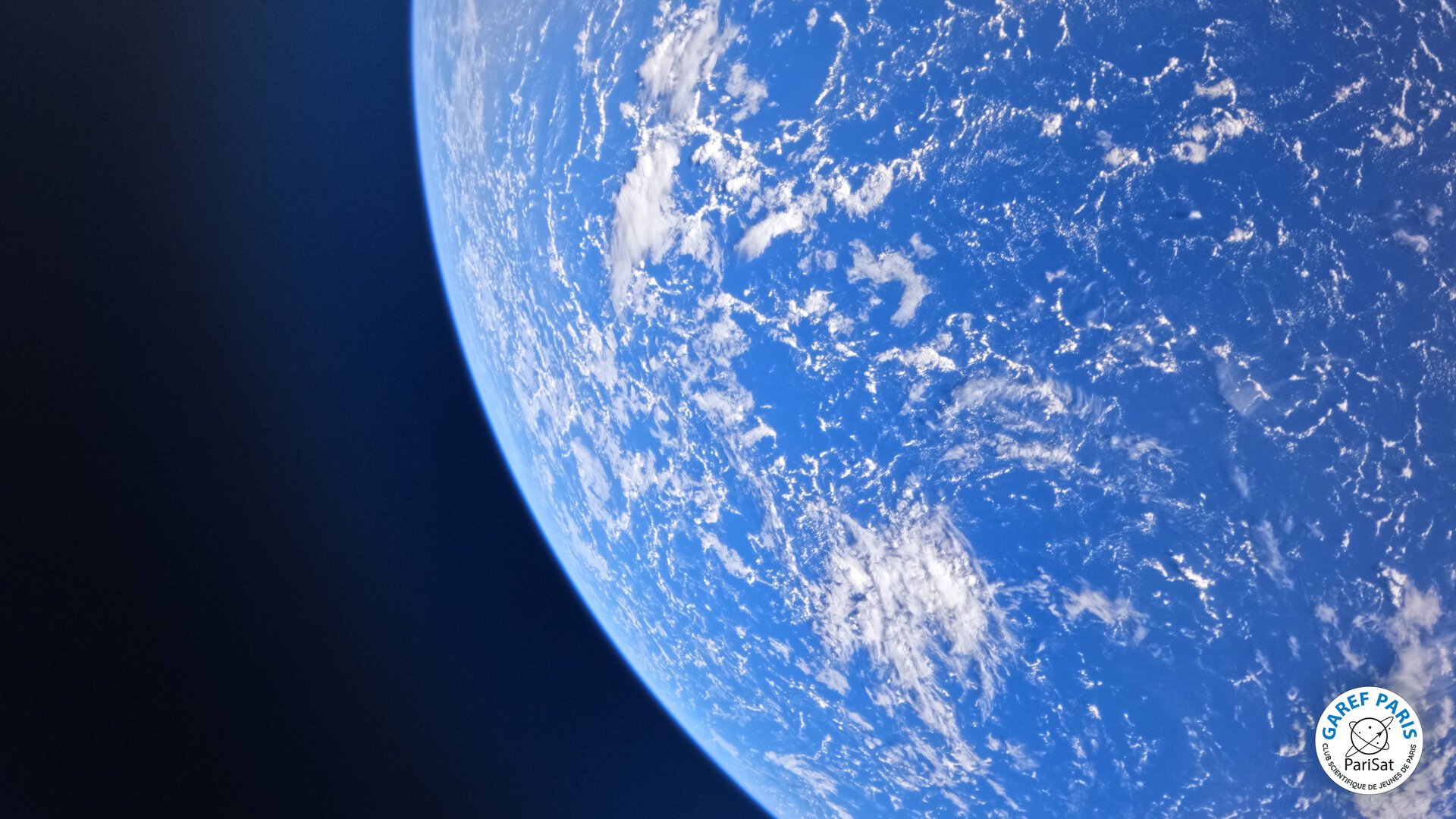
In addition to the scientific experiment, PariSat includes a photo component. The team has adapted a GoPro camera for space use, which is controlled by a module entirely designed by Garef Aérospatial. This camera, featuring a fisheye lens, captured stunning images of Earth, showcasing the planet’s curvature and adding a visual dimension to the mission.
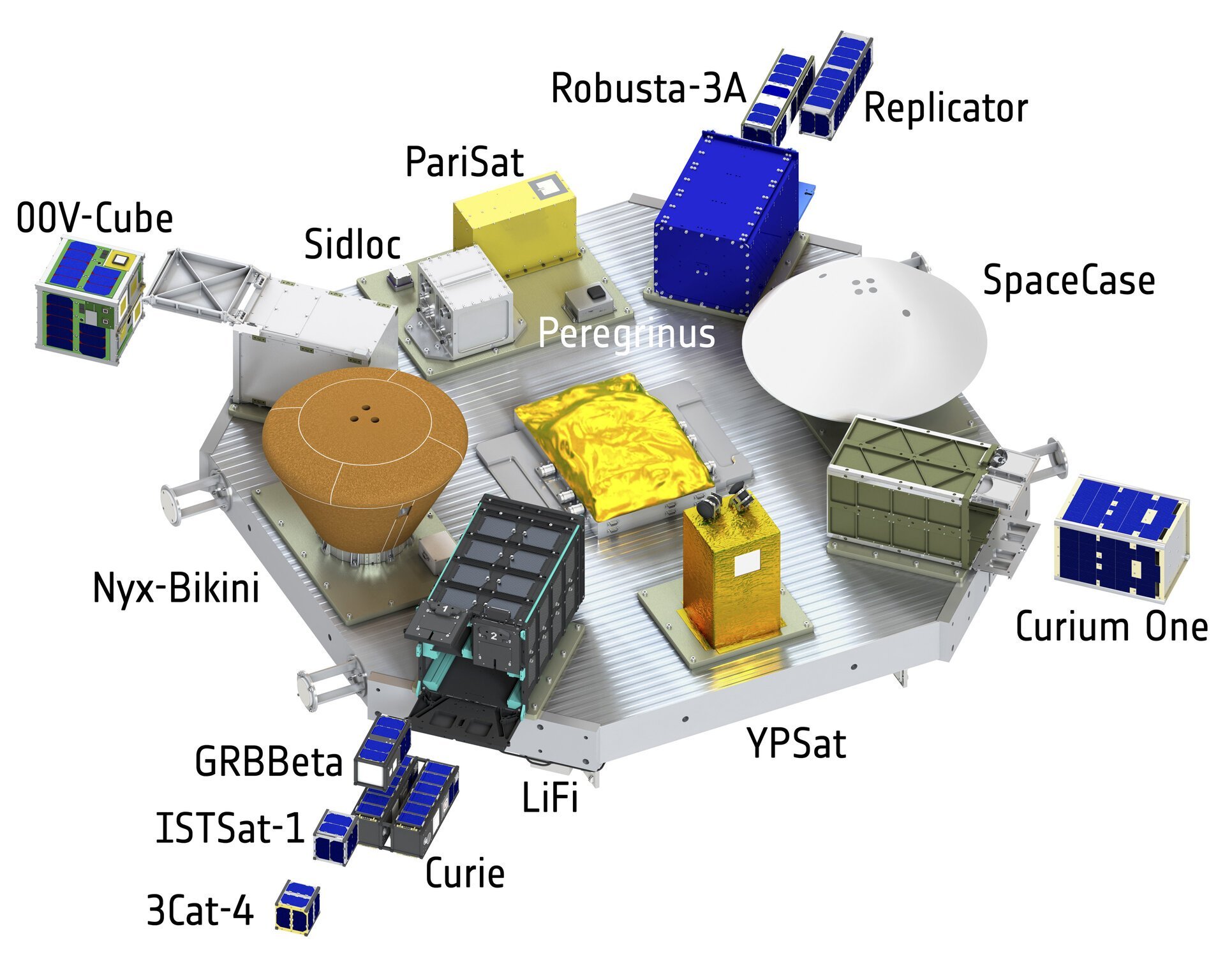
As the Garef Aérospatial team begins analyzing the data, the PariSat mission serves as a testament to the capabilities of young engineers and highlights the potential for youth-led initiatives in space science. With this mission, the team looks forward to future projects, driven by the experiences and successes gained from their participation in Ariane 6’s first flight.
[ANS thanks the European Space Agency and Garef Aérospatial for the above information]
The 2024 AMSAT President’s Club coins are here now!
Help Support GOLF and Fox Plus
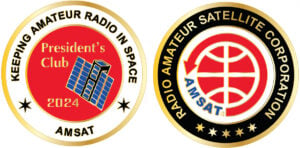 Join the AMSAT President’s Club today and help
Join the AMSAT President’s Club today and help
Keep Amateur Radio in Space!
https://www.amsat.org/join-the-amsat-presidents-club/
SpaceX to Develop Enhanced Dragon Spacecraft for ISS Deorbit
SpaceX will develop an enhanced version of its Dragon spacecraft for NASA to deorbit the International Space Station (ISS) at the end of its operational life. This development comes as part of a contract awarded to SpaceX on June 26, valued at up to $843 million. The new spacecraft, known as the United States Deorbit Vehicle (USDV), was detailed by NASA and SpaceX officials at a briefing on July 17th.
The USDV will be based on SpaceX’s existing Dragon spacecraft but will feature a redesigned and larger trunk section with additional thrusters. Specifically, the USDV will have 46 Draco thrusters, including 16 for attitude control and 30 for the maneuvers required to lower the ISS’s orbit. Sarah Walker, SpaceX’s director of Dragon mission management, explained that the enhanced trunk section is twice as long as the regular one.
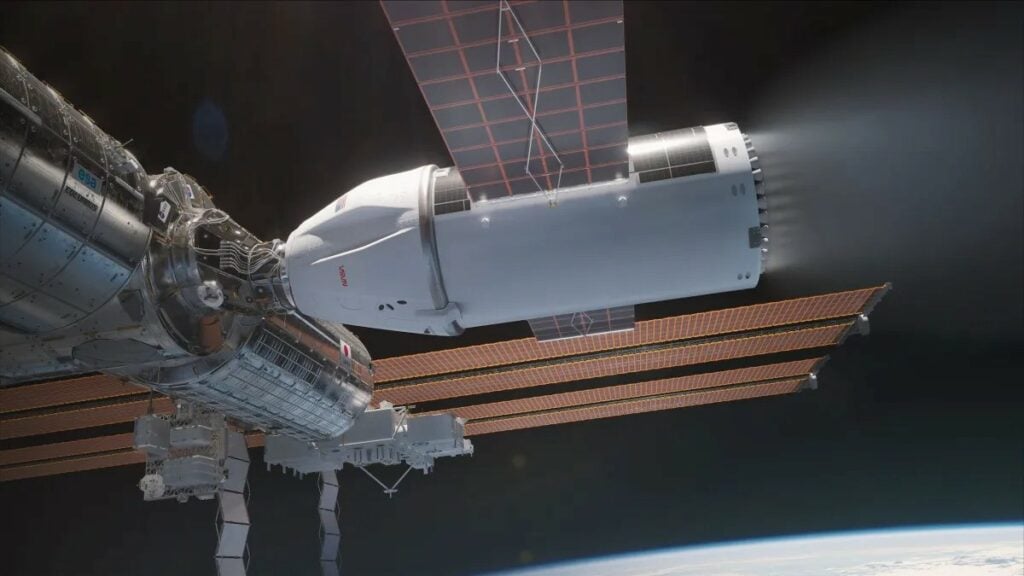
After its arrival and successful checkout, ISS controllers will allow the station’s orbit to naturally decay. The final crew will depart when the station’s altitude decreases from its current 400 kilometers to 330 kilometers. The ISS’s orbit will continue to decay over approximately six months before NASA uses the USDV for a final controlled deorbit, targeting a remote ocean corridor about 2,000 kilometers long.
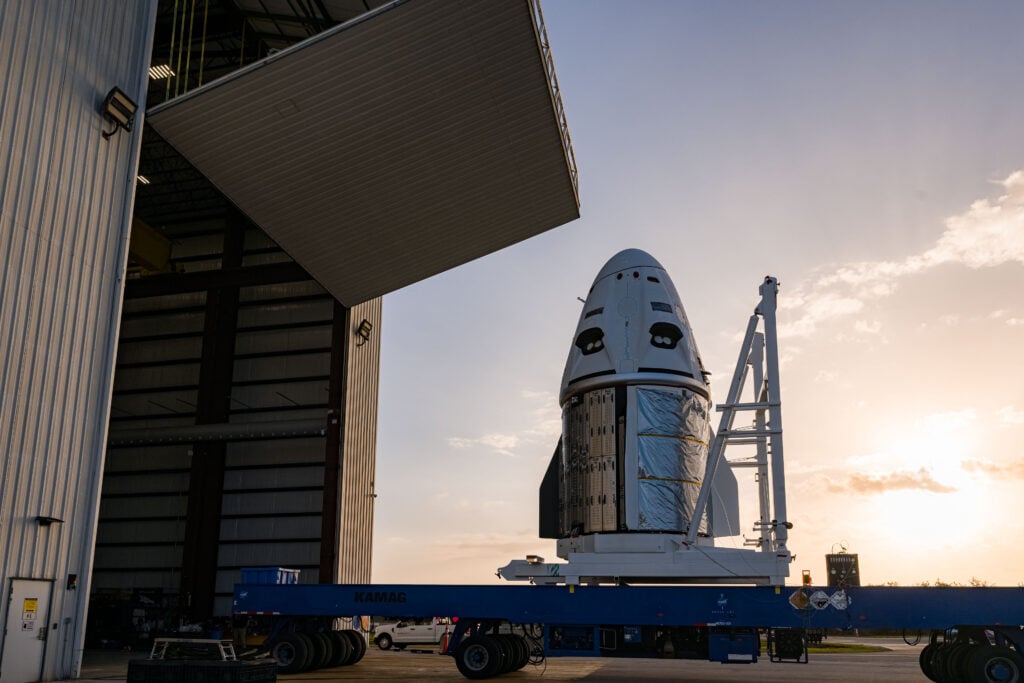
SpaceX expressed readiness to support the launch if given the opportunity. Northrop Grumman was the only other company to bid on the USDV. NASA’s source selection statement indicated that Northrop’s bid was significantly higher in price and rated lower in both mission suitability and past performance compared to SpaceX. Ken Bowersox, NASA associate administrator for space operations, expressed satisfaction with the proposals received, noting he was pleased with the submissions from SpaceX and Northrop Grumman.
[ANS thanks Jeff Foust, Spacenews.com, for the above information]
GridMasterMap Satellite Top 100 Rovers August 2024 Rankings
The August 2024 rankings for the Top 100 Rovers (Mixed LEO/MEO/GEO) in satellite operations, as determined by @GridMasterMap on Twitter, has been released. The ranking is determined by the number of grids and DXCC entities activated, taking into account only those grids where a minimum number of QSOs logged on the gridmaster.fr website have been validated by a third party. Grid numbers do not directly reflect the exact number of activations. Satellite operators are encouraged to upload their LoTW satellite contacts to https://gridmaster.fr in order to provide more accurate data.
Updated: 2024-07-26
| 1 | ND9M | 26 | LU5ILA | 51 | N4AKV | 76 | AA8CH |
| 2 | NJ7H | 27 | N5BO | 52 | AC0RA | 77 | VE1VOX |
| 3 | JA9KRO | 28 | K8BL | 53 | EA4NF | 78 | FG8OJ |
| 4 | N5UC | 29 | DL2GRC | 54 | JL3RNZ | 79 | PT9BM |
| 5 | UT1FG | 30 | KE4AL | 55 | AA5PK | 80 | KI7UXT |
| 6 | OE3SEU | 31 | VE3HLS | 56 | SP5XSD | 81 | YU0W |
| 7 | DL6AP | 32 | KB5FHK | 57 | F4DXV | 82 | KJ7NDY |
| 8 | WI7P | 33 | KI7UNJ | 58 | AD7DB | 83 | KB2YSI |
| 9 | DP0POL | 34 | LA9XGA | 59 | KI7QEK | 84 | WA9JBQ |
| 10 | K5ZM | 35 | JO2ASQ | 60 | VE1CWJ | 85 | N6UTC |
| 11 | N6UA | 36 | F4BKV | 61 | KE9AJ | 86 | N4DCW |
| 12 | HA3FOK | 37 | PA3GAN | 62 | XE1ET | 87 | N0TEL |
| 13 | WY7AA | 38 | N7AGF | 63 | VA7LM | 88 | JM1CAX |
| 14 | N9IP | 39 | KI0KB | 64 | N8RO | 89 | VE3GOP |
| 15 | W5PFG | 40 | VK5DG | 65 | KM4LAO | 90 | K0FFY |
| 16 | AK8CW | 41 | XE3DX | 66 | SM3NRY | 91 | CU2ZG |
| 17 | AD0DX | 42 | K7TAB | 67 | N4UFO | 92 | KG4AKV |
| 18 | F5VMJ | 43 | KE0WPA | 68 | W1AW | 93 | VE7PTN |
| 19 | WD9EWK | 44 | KE0PBR | 69 | DL4EA | 94 | AF5CC |
| 20 | AD0HJ | 45 | VA3VGR | 70 | PT2AP | 95 | K6VHF |
| 21 | ND0C | 46 | PR8KW | 71 | W8LR | 96 | VE6WK |
| 22 | DJ8MS | 47 | W7WGC | 72 | M1DDD | 97 | W8MTB |
| 23 | ON4AUC | 48 | N6DNM | 73 | HB9GWJ | 98 | DK9JC |
| 24 | KX9X | 49 | EB1AO | 74 | DF2ET | 99 | PT9ST |
| 25 | KG5CCI | 50 | JK2XXK | 75 | LU4JVE | 100 | VO2AC |
[ANS thanks @GridMasterMap for the above information]
Need new satellite antennas?
Purchase an M2 LEO-Pack from the AMSAT Store! When you purchase through AMSAT, a portion of the proceeds goes towards
When you purchase through AMSAT, a portion of the proceeds goes towards
Keeping Amateur Radio in Space.
https://amsat.org/product-category/hardware/
Changes to AMSAT-NA TLE Distribution for July 26, 2024
Two Line Elements or TLEs, often referred to as Keplerian elements or keps in the amateur community, are the inputs to the SGP4 standard mathematical model of spacecraft orbits used by most amateur tracking programs. Weekly updates are completely adequate for most amateur satellites. TLE bulletin files are updated daily in the first hour of the UTC day. New bulletin files will be posted immediately after reliable elements become available for new amateur satellites. More information may be found at https://www.amsat.org/keplerian-elements-resources/.
The following satellite has been removed from this week’s AMSAT TLE distribution:
TEVEL-6 NORAD Cat ID 50999 Decayed from orbit on or about 19 July 2024
The following satellite has been added to this week’s AMSAT TLE distribution:
CatSat NORAD Cat ID 60246 Downlinks on 437.185 MHz and 10470.00 MHz have been coordinated
[ANS thanks AMSAT Orbital Elements page for the above information]
ARISS NEWS
Amateurs and others around the world may listen in on contacts between amateurs operating in schools and allowing students to interact with astronauts and cosmonauts aboard the International Space Station. The downlink frequency on which to listen is 145.800 MHz worldwide.
+ Recently Completed Contacts
Nizhnekamsk schools, Nizhnekamsk, Republic of Tatarstan, Russia, direct via RC4P
The ISS callsign was RSØISS
The scheduled crewmember was Aleksandr Grebyonkin RZ3DSE
The ARISS mentor was RV3DR
Contact was successful: Sat 2024-07-27 13:50 UTC
Arizona Science Center, Phoenix, AZ, telebridge via AB1OC
The ISS callsign was NA1SS
The scheduled crewmember was Matthew Dominick KCØTOR
The ARISS mentor was K4RGK
Contact was successful: Sat 2024-07-27 18:24:08 UTC
+ Upcoming Contacts
Narayama ARISS School Contact, Nara, Japan, direct via JK3ZNB
The ISS callsign is presently scheduled to be OR4ISS
The scheduled crewmember is Mike Barratt KD5MIJ
The ARISS mentor is 7M3TJZ
Contact is go for: Mon 2024-07-29 11:03:33 UTC
Kopernik Observatory, Vestal, NY, mentor direct via K2ZRO
The ISS callsign is presently scheduled to be NA1SS
The scheduled crewmember is Jeanette Epps KF5QNU
The ARISS mentor is AB1OC
Contact is go for: Wed 2024-07-31 18:17:25 UTC
Watch for Livestream at https://youtube.com/live/Tv3x3D0DTzU?feature=share
SMPIT Nurul Ishlah, Banda Aceh, Indonesia, telebridge via VK4ISS
The ISS callsign is presently scheduled to be NA1SS
The scheduled crewmember is Sunita Williams KD5PLB
The ARISS mentor is VE3TBD
Contact is go for: Fri 2024-08-02 12:43:07 UTC
A.G. Nikolaev Secondary School, Shorshel, Chuvashia, Russia direct via TBD
The ISS callsign is presently scheduled to be RSØISS
The scheduled crewmember is Nikolay Chub (***)
The ARISS mentor is RV3DR
Contact is go for Sun 2024-08-11 08:20 UTC
The crossband repeater continues to be active (145.990 MHz up {PL 67} & 437.800 MHz down). If any crewmember is so inclined, all they have to do is pick up the microphone, raise the volume up, and talk on the crossband repeater. So give a listen, you just never know.
The packet system is also active (145.825 MHz up & down).
As always, if there is an EVA, a docking, or an undocking; the ARISS radios are turned off as part of the safety protocol.
Note, all times are approximate. It is recommended that you do your own orbital prediction or start listening about 10 minutes before the listed time.
The latest information on the operation mode can be found at https://www.ariss.org/current-status-of-iss-stations.html
The latest list of frequencies in use can be found at https://www.ariss.org/contact-the-iss.html
[ANS thanks Charlie Sufana, AJ9N, one of the ARISS operation team mentors for the above information]
Upcoming Satellite Operations
Posted July 21st by @W8LR_Jerry on X (formerly Twitter): EM57/58 and EM67/68 are still planned for Aug 2/3. Please check hams.at and @W8LR_Jerry for updates. As I mentioned two months ago EM85 in TN will now be in my travel schedule beginning in Sept. I was just notified today. I will be doing FM/Linear/GC when there. More later.
Posted July 23rd by @SeanKutzko KX9X on X (formerly Twitter): A reminder that I’m leaving for Hawaii this Friday! Will be on SSB / FM sats *holiday style* plus maybe some QRP FT8. No GreenCube, sorry. Will post passes here and to hams.at soon. #HamRadio @AMSAT #AMSAT
Posted July 25th by @AD0HJ on X (formerly Twitter): Work trip coming up the first full week of August in Fort Collins, Colorado. Will make stops on the EN02/EN03 | DN82/DN92 grid lines on the drive out. DN90/DN91 | EN20/EN30 grid lines on the way back. RS-44 satellite passes in the evenings. Posted at hams.at.
Posted July 26th by @AMSAT-UK on X (formerly Twitter): 7E4K IOTA Expedition to Ketawai Island (OC-144, locator OI37dr) will be on various satellites (LEO, MEO and GEO). Please visit the website for schedule: https://7e4k.com 73 de Yono – YD0NXX ORARI HQ, Satellite Division #amsat #hamradio #hamr
Jonathan @N4AKV_ has posted an ambitious August roving schedule on his qrz.com page. Tentative plans for a major satellite and 6m road trip through Maine, Nova Scotia, Newfoundland, and St. Pierre and Miquelon this summer. Satellite passes listed on hams.at for the next week include grid squares FN43, FN53, and GN16.
A growing number of satellite rovers are currently engaged in sharing their grid square activations on https://hams.at. By visiting the website, you gain easy access to comprehensive information about the operators responsible for activating specific grid squares. Additionally, you have the ability to assess the match score between yourself and a particular rover for a given pass, while also being able to identify the upcoming satellite passes that are accessible from your location.
[ANS thanks Ian Parsons, K5ZM, AMSAT rover page manager, for the above information]
AMSAT Ambassador Activities
AMSAT Ambassadors provide presentations, demonstrate communicating through amateur satellites, and host information tables at club meetings, hamfests, conventions, maker faires, and other events.
2024 KARS / ARRL Idaho State Convention – August 3, 2024
2130 North Meyer Road
Post Falls, ID 83854
https://k7id.org/article/StateConvention2024?classification=Info
Huntsville Hamfest – August 17th and 18th, 2024
Von Braun Center South Hall
700 Monroe Street SW
Huntsville, AL 35801
https://hamfest.org/
AMSAT Booth and Forum / N8DEU and W4FCL
Northeast HamXpostion – August 22nd thru 25th, 2024
Best Western Royal Plaza Hotel & Trade Center
181 Boston Post Road West
Marlborough, MA 01752
https://hamxposition.org/
Greater Louisville Hamfest – September 7th, 2024
Paroquet Springs Conference Centre
395 Paroquet Springs Drive
Shepherdsville, KY 40165
https://louisvillehamfest.wixsite.com/louisvillehamfest
AMSAT Forum and Information Table / W4FCL
North Star Radio Convention – October 5th, 2024
Hennepin Technical College (North Campus)
9000 Brooklyn Boulevard
Brooklyn Park, MN 55445
https://conv2023.tcfmc.org/
AMSAT Forum and Information Table / KØJM and ADØHJ
Central Kentucky Hamfest – October 5th, 2024
Highlands Baptist Church
2032 Parallel Road
Lexington, KY 40502
https://www.facebook.com/w9khz/
AMSAT and Educational Satellites Forum and Information Table / AI4SR and W4FCL
2024 AMSAT Space Symposium and Annual General Meeting – October 25th thru 27th, 2024
Doubletree by Hilton Tampa Rocky Point Waterfront
3050 N Rocky Point Drive West
Tampa, FL 33607
https://www.amsat.org/
Stone Mountain Hamfest, ARRL State Convention – November 2nd and 3rd, 2024
Gwinnett County Fairgrounds
2405 Sugarloaf Parkway
Lawrenceville, GA 30042
https://stonemountainhamfest.com/
[ANS thanks Bo Lowrey, W4FCL, Director – AMSAT Ambassador Program, for the above information]
Want to fly the colors on your own grid expedition?
Get an AMSAT car flag and other neat stuff from our Zazzle store!
25% of the purchase price of each product goes towards Keeping Amateur Radio in Space
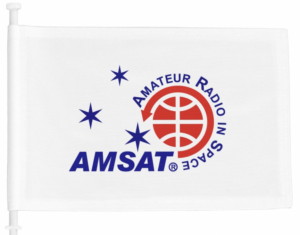 Keeping Amateur Radio in Space
Keeping Amateur Radio in Space
https://www.zazzle.com/amsat_gear
Satellite Shorts From All Over
+ ASRTU-1 is a 12U CubeSat mission developed by students from the Harbin Institute of Technology and Bauman State Technical University. It is designed for educational purposes and features an amateur radio SDR payload. The satellite will offer telecommand uplink and telemetry/digital image downlink capabilities. Harbin Institute of Technology, known for developing successful amateur radio satellites like LilacSat-2 and DSLWP-B, has created a new SDR-based transceiver for ASRTU-1. This transceiver will provide communication resources, including a V/U FM transponder, UHF telemetry downlink, and a 10.5G image downlink. Scheduled to launch from Vostochny Cosmodrome on November 2024, ASRTU-1 will operate in a 530km sun-synchronous orbit with coordinated downlinks on 436.210 MHz, 435.400 MHz, and 10460.00 MHz and a repeater uplink on 145.875 MHz. (ANS thanks @AKAhamradio, X.com, for the above information)
+ SpaceX successfully test-fired the engines on its Super Heavy booster on July 15, 2024, in preparation for the fifth integrated flight test (IFT-5) of its Starship vehicle. This upcoming launch, expected in August, will be the most ambitious to date and aims to build on the success of previous flights. The Super Heavy booster, measuring 233 feet tall, fired its 33 Raptor engines at full thrust for about 20 seconds during the static test at SpaceX’s Starbase facility in Texas. Starship, which has been selected by NASA for the Artemis 3 lunar mission, is designed as a fully reusable system capable of carrying humans to Mars. Unlike SpaceX’s Falcon 9, the Super Heavy booster is intended to return directly to its launch pad, where it will be caught midair by the launch tower’s “chopstick” arms. With each test flight achieving progressively more, SpaceX aims to test the booster catch system in the upcoming launch, marking a significant advance towards rapid reusability and future missions. (ANS thanks Josh Dinner, Space.com, for the above information)
+ The 188,000-pound, 212-foot-tall core stage for the Artemis-2 moon mission has arrived at NASA’s Kennedy Space Center (KSC) following a 900-mile journey from Michoud Assembly Facility in New Orleans. This milestone marks a significant step in preparing for the Artemis-2 mission, which aims to return humans to the moon for the first time in over fifty years. NASA astronauts Reid Wiseman, Victor Glover, Christina Koch, and Canadian astronaut Jeremy Hansen are slated to launch on this mission as early as September 2025. Upon arrival at KSC, the core stage was transferred to a self-propelled transporter and moved into the iconic Vehicle Assembly Building (VAB). Engineers will soon begin processing the stage for stacking operations, involving the integration of the twin Solid Rocket Boosters (SRBs) and the spacecraft. The Space Launch System (SLS) rocket’s twin boosters and the core stage’s four RS-25 engines will generate nearly 9 million pounds of thrust at liftoff, propelling Artemis-2 and its crew to the moon. (ANS thanks Mike Killian, AmericaSpace.com, for the above information)
+ NASA astronauts Butch Wilmore and Sunita Williams will remain at the International Space Station (ISS) with no set return date due to ongoing technical issues with Boeing’s Starliner capsule. The astronauts departed for the ISS in early June on a test mission expected to last about a week, but faulty thrusters and helium leaks have delayed their return. Despite some thrusters now functioning normally and the leaks being stable, NASA and Boeing are still not ready to schedule their departure. NASA assures that the astronauts are not stranded and the technical issues do not pose a threat to the mission. Engineers are conducting tests, including on a spare thruster in New Mexico, to understand and resolve the problems. Steve Stich, NASA’s commercial crew program manager, emphasized the priority of the astronauts’ safety and the consideration of backup return options. (ANS thanks Anna Betts, The Guardian, for the above information)
+ SpaceX is set to resume Falcon 9 launches as early as July 27 following the completion of an investigation into an upper stage anomaly from the July 11 launch. The mishap, which resulted in the rocket’s upper stage failing to perform a second burn and stranding Starlink satellites in a low orbit, was attributed to a liquid oxygen leak caused by a cracked sense line. This crack was due to engine vibration fatigue and a loose clamp. The resulting leak led to ice buildup and excessive cooling of engine components, causing a hard start and subsequent damage to the engine hardware. SpaceX has implemented immediate fixes and proposed long-term solutions, and the FAA has determined that there are no public safety issues, allowing launches to proceed. SpaceX is targeting July 27 for the next launch, with two more launches tentatively scheduled for July 28. (ANS thanks Jeff Foust, SpaceNews, for the above information)
Join AMSAT today at https://launch.amsat.org/
In addition to regular membership, AMSAT offers membership to:
* Societies (a recognized group, clubs or organization).
* Primary and secondary school students are eligible for membership at one-half the standard yearly rate.
* Post-secondary school students enrolled in at least half-time status shall be eligible for the student rate for a maximum of 6 post-secondary years in this status.
* Memberships are available for annual and lifetime terms.
Contact info [at] amsat.org for additional membership information.
73 and remember to help Keep Amateur Radio in Space!
This week’s ANS Editor, Mitch Ahrenstorff, ADØHJ
ad0hj [at] amsat.org
